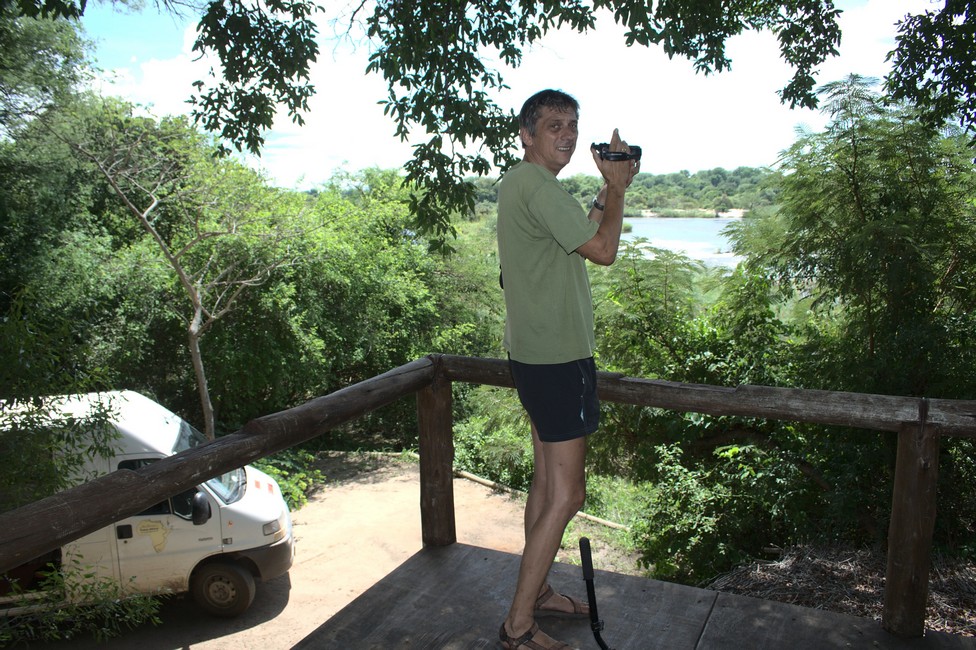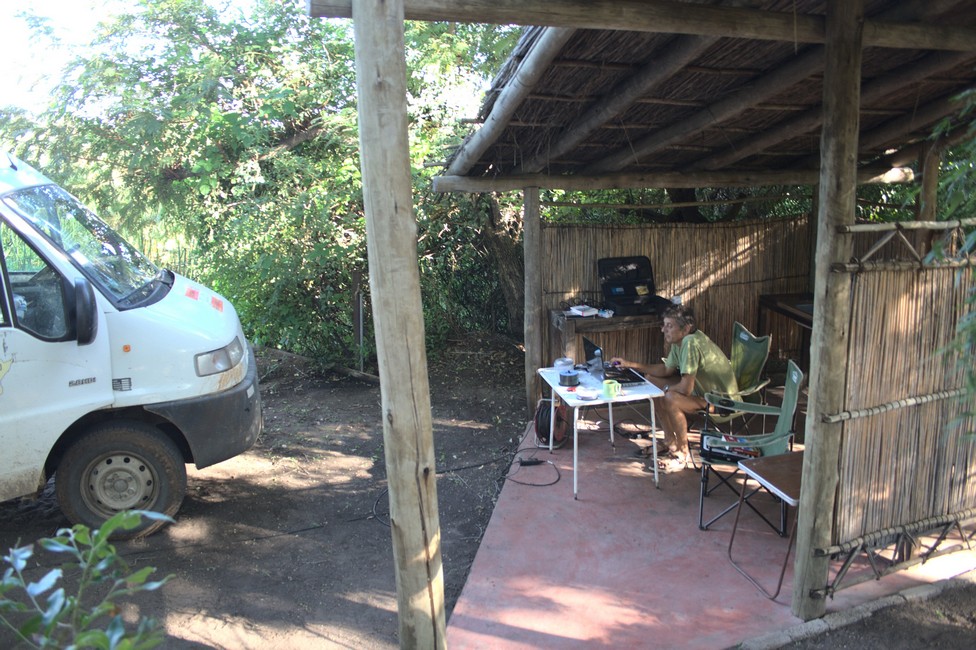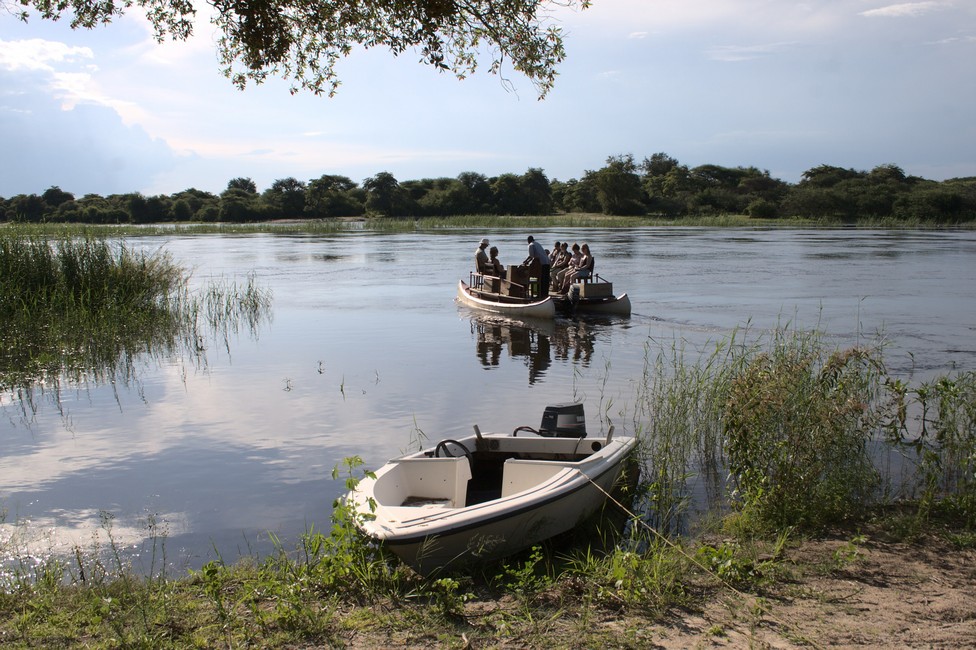After a few kilometers we turn off in Divundu to Mahangu Lodge and see the first time the Okavango.

It calmly flows, until the Okavango Delta it is still about 200 kilometers where it stops in the Kalahari sand.
We also camp at the nearby Popa Falls. Popa Falls is a series of cascades and rapids located on the Okavango River in northeastern Namibia, near the border with Botswana. The falls are situated within the Bwabwata National Park and are a popular tourist attraction in the area.

The falls are not very high, with a total drop of only about 4 meters (13 feet), but the volume of water flowing through the channels and rapids can be quite impressive, especially during the rainy season. The falls are also surrounded by a beautiful natural environment, with lush vegetation, forests, and wetlands, making it a great spot for nature lovers and photographers.

Visitors to Popa Falls can enjoy a range of activities, including camping, hiking, birdwatching, and fishing. The area is particularly known for its excellent tiger fishing, and several lodges and campsites in the area offer guided fishing trips and boat safaris.

Overall, Popa Falls is a must-visit destination for anyone traveling to northeastern Namibia, offering a unique combination of natural beauty and outdoor adventure.
We move on only a little bit because it is already two days before Christmas, and we do not want to wander around like Joseph and Mary. The Lodge is situated idyllically on the Okavango River overlooking Angola, we find this is a good place to spend Christmas and New Year too.

The Okavango River forms the boundary between Namibia and Angola for much of its length, and on the Namibian side, it is a vital source of water and life for both people and wildlife. The river flows through the Caprivi Stripe, a narrow strip of land in the far northeast of Namibia that extends between Angola to the north and Botswana to the south.

Along the Namibian side of the Okavango River, there are several towns and villages, including Rundu, Divundu, and Katima Mulilo, which serve as important centers for trade, commerce, and tourism in the region. The river also supports a diverse range of flora and fauna, including hippos, crocodiles, elephants, and a variety of fish species, making it a popular destination for wildlife viewing and fishing.
The Okavango River is also an important source of water for irrigation and agriculture in the region, and many small-scale farmers rely on the river for their livelihoods. However, the river is also subject to periodic flooding, which can cause significant damage to crops and infrastructure in the surrounding areas.

Overall, the Okavango River is a vital and dynamic natural resource on the Namibian side, supporting both human and ecological communities and playing an important role in the social, economic, and environmental sustainability of the region.